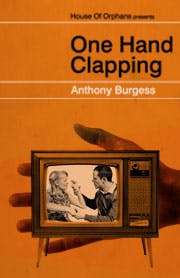

Such devices enables a person to sense spatial information conveyed through sensory channels other than the eye, such as hearing and sense of touch. An alternative approach is here investigated based on the possibility of enhancing the human vision system using a sensory substitution device.

This approach, however has challenges in connection with very small and very large scenes under investigation. Another is projecting the chemical images back onto the scene under study in order to render the chemical information in situ to the user. However such cluttering of the visual field with computer-generated graphics may confuse the user and reduce functionality. One approach is to overlay the view of the real physical world with computer-generated graphics as in augmented reality. Effective integration of spatial information in general from external sources with vision is a challenge. This is especially true for interactive work where chemical images are being rapidly updated to the user. For many applications visualizing such images on computer screens is sufficient, however there are cases where there is a need to combine the chemical images more naturally with human vision. Secondly that stimulation within the substituting modality, but by means other than a sensory substitution device, should still produce sensation in the normally substituted modality.Ĭhemical images which are often computed from hyperspectral images contain the spatial distribution of chemical information of a scene. Lastly, we propose two testable predictions: firstly that, in an expert user of a sensory substitution device, the substituting modality should not be lost. We then go on to analyse the key similarities and differences between sensory substitution and synaesthesia. We consider different lines of evidence that support, to varying degrees, the assumption that sensory substitution is associated with visual-like experiences. In the most common forms of sensory substitution, perceptual processing of an auditory or tactile signal (which has been converted from a visual signal) is experienced as visual-like in addition to retaining auditory/tactile characteristics. Both are associated with atypical perceptual experiences elicited by the processing of a qualitatively different stimulus to that which normally gives rise to that experience. In this review we explore the relationship between synaesthesia and sensory substitution and argue that sensory substitution does indeed show properties of synaesthesia. Suppose you ask the question: ‘what is the difference between experiences of the colour red and the colour green?’ Functionalism eliminates from the question the qualia of red and green For synaesthesia runs counter to the most fundamental tenet of functionalism: that qualia are identical to the functions with which they are associated. But they do not seem to realise how deep the problem goes. 30) that their model fails to account for synaesthesia. This experience is accompanied by activity in the colour-selective visual area known as V4 or V8, probably reflecting an aberrant, genetically determined, extra connection from cortical language areas directly to this region, Functionalism questioned In ‘coloured hearing’, one of the most common forms of synaesthesia, subjects experience colours in response to heard words. The theory encounters a major obstacle in dealing with synaesthesia. This triumph for functionalist theory, however, is incomplete. In cortical dominance ‘cortical activation from a new peripheral input source gives rise The ‘problem’ of synaesthesia Drawing upon a variety of examples of neural plasticity, they distinguish between two ways in which qualia can be affected by changes in the normal relations between behaviour and neural activity: ‘cortical dominance’ and ‘cortical deference’.

Section snippets The case for functionalismĪ recent article by two philosophers, Susan Hurley and Alva Noë, does the field sterling service by bringing these issues into the glare of empirical data-light.


 0 kommentar(er)
0 kommentar(er)
